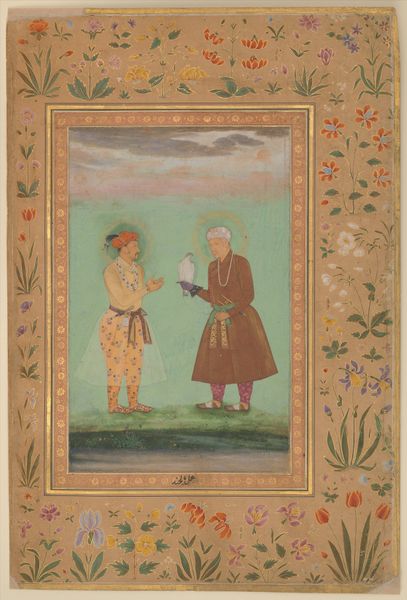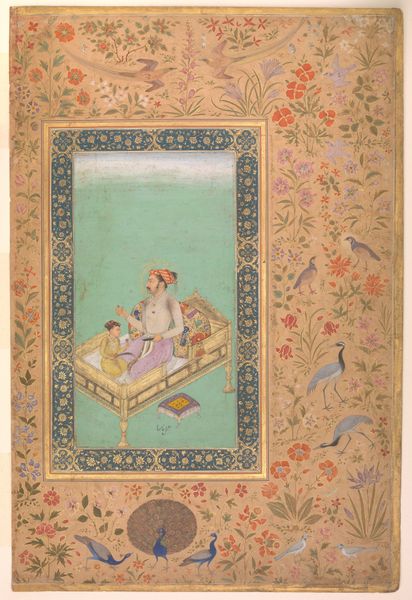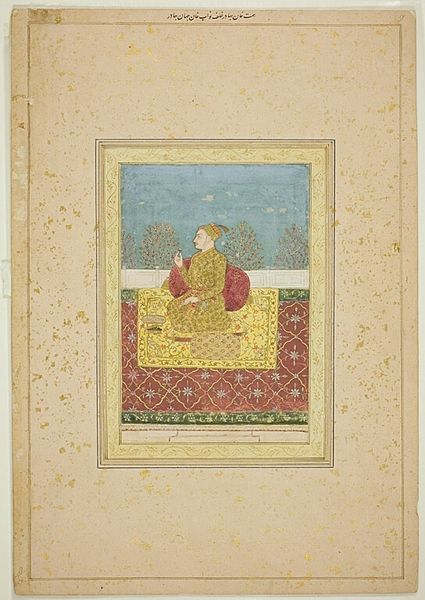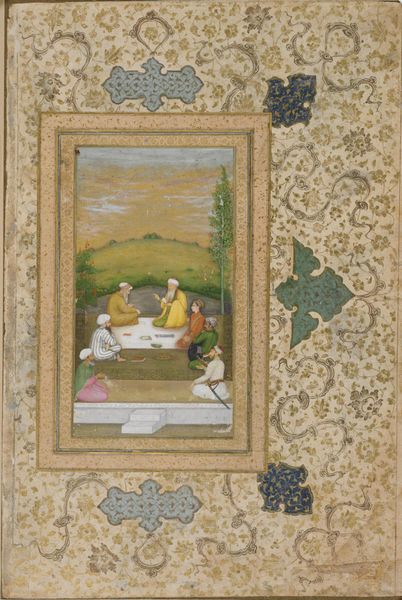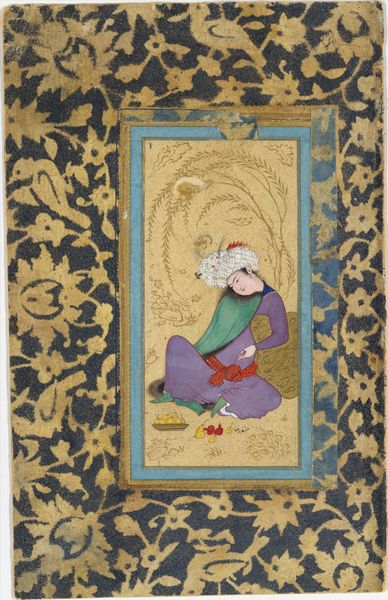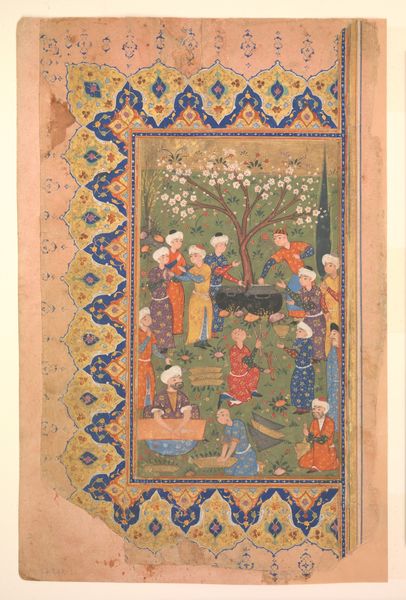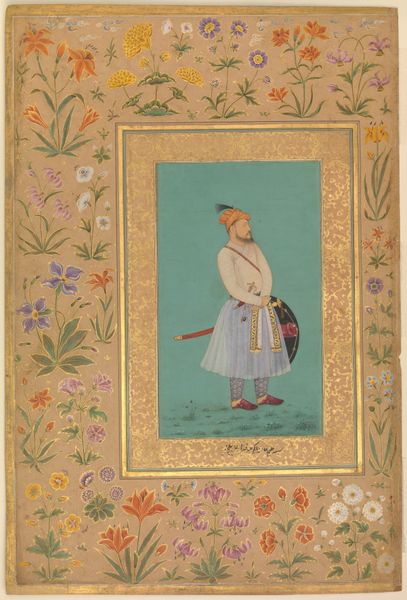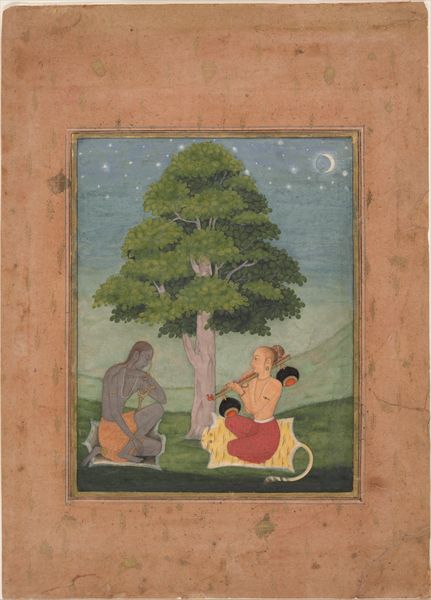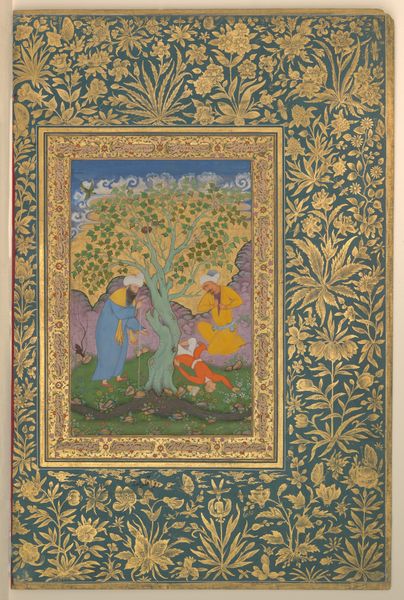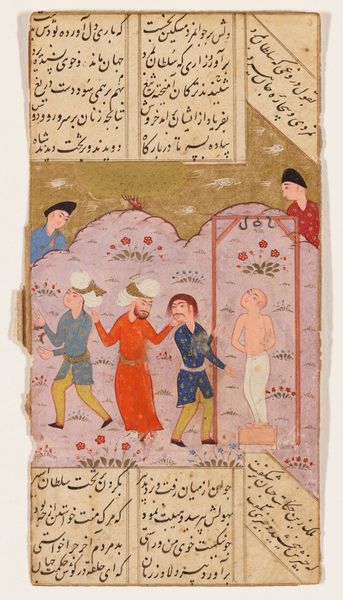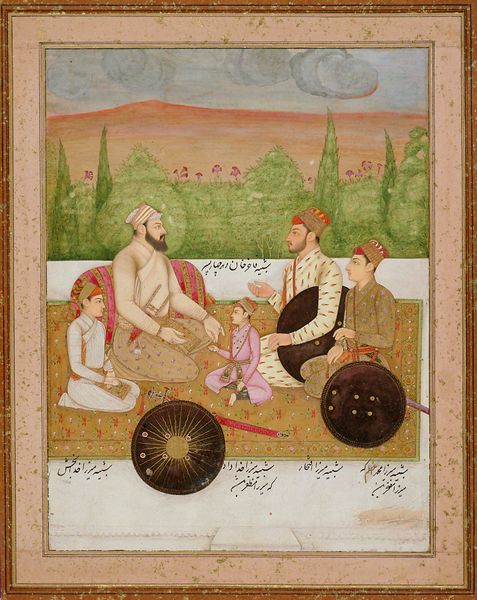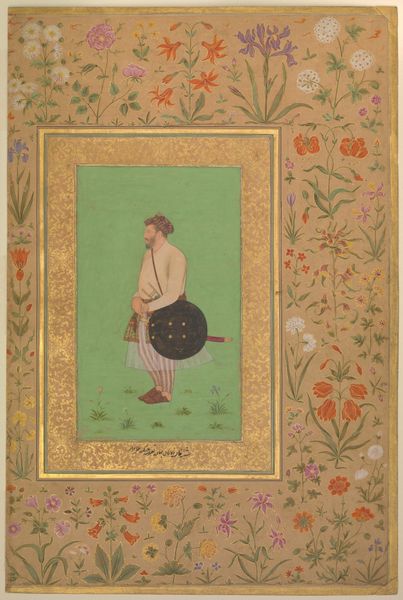
painting, watercolor
#
portrait
#
painting
#
figuration
#
watercolor
#
men
#
islamic-art
#
miniature
#
profile
Dimensions: H, 15 in. (38.1 cm) W. 9 13/16 in. (24.9 cm)
Copyright: Public Domain
Editor: Here we have Payag's "Portrait of Islam Khan Mashhadi," created in the 17th century, rendered in watercolor. It strikes me as quite formal, with that central framed portrait and the repetition of figures around it. What can you tell me about this work? Curator: Notice first the clear division of labor represented. At the top and bottom, we see men occupied in seemingly leisurely activities – preparing food, perhaps music-making. Are these figures providing for Islam Khan Mashhadi? The rigid, upright poses and the shields held by other figures surrounding the central portrait suggests this division in labour, emphasizing class distinctions in 17th century Islamic society. The gold background – how might its production reflect power structures of the time? Editor: That's fascinating! I hadn't thought about the gold as a material tied to power. So the miniature format, even the use of watercolor – is there significance to their being used in this context, and perhaps accessible for many or not? Curator: Precisely! Watercolors, while beautiful, are often seen as less ‘valuable’ than oils. Does the choice of medium point to this work being perhaps for private display, or mass produced within that class of people to portray status, instead of serving a strictly royal patron? The scale suggests portability and the availability to replicate; imagine workshops dedicated to churning out similar works. Editor: So it's less about individual genius and more about collective craftsmanship within specific economic conditions? Curator: Exactly. By understanding the conditions of production, we get a much richer sense of the artwork's social meaning. These choices become statements about function, ownership and broader societal values beyond simple aesthetics. Editor: I never would have thought to consider it that way. Thank you! Curator: My pleasure, indeed viewing materials is often the most valuable place to find context within art.
Comments
No comments
Be the first to comment and join the conversation on the ultimate creative platform.
